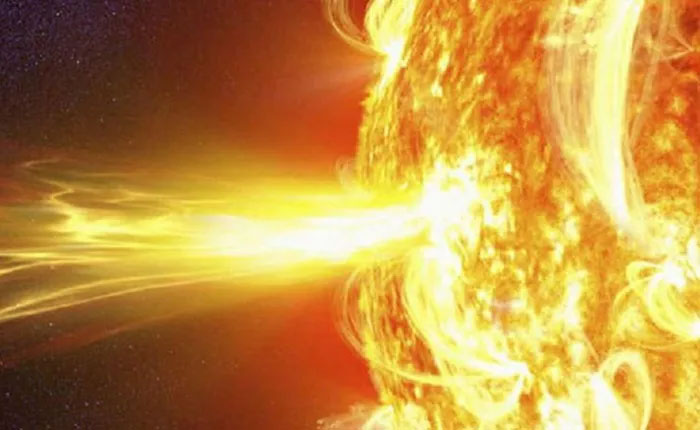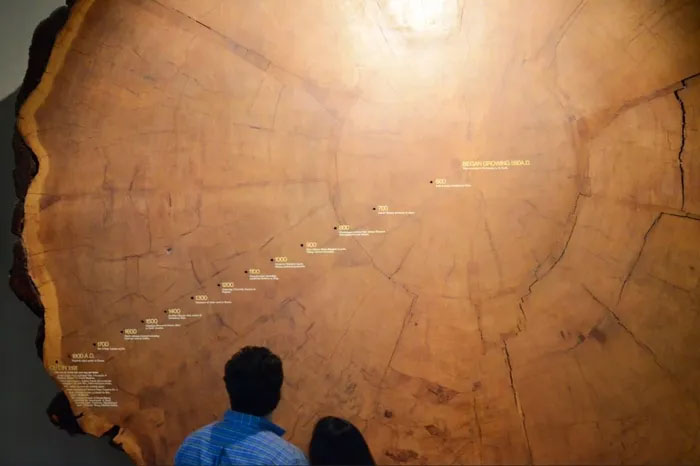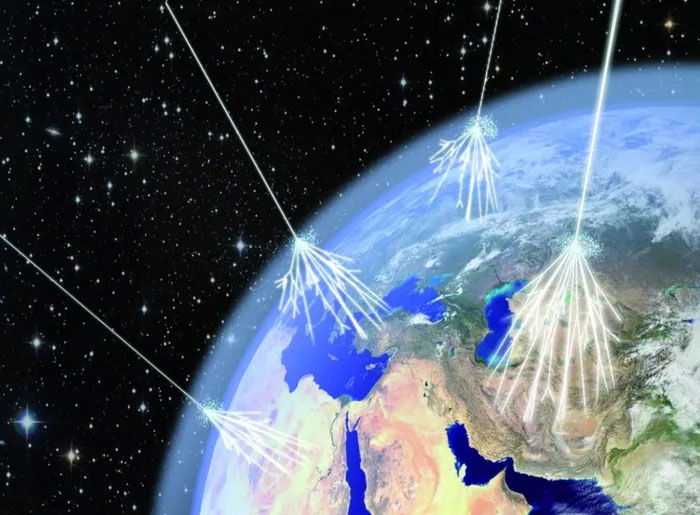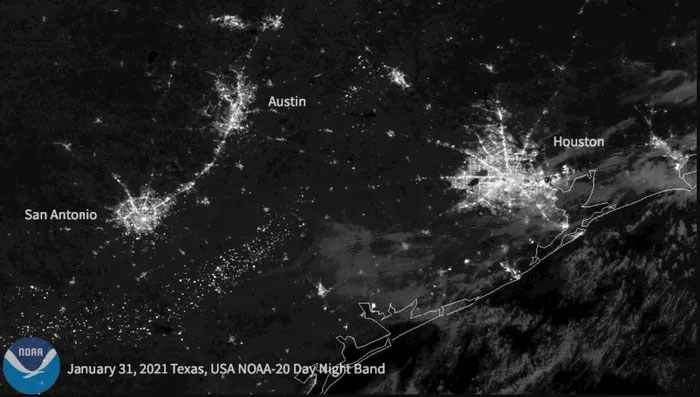The Carrington Event of 1859 provided us with a glimpse into the catastrophic potential of the Sun on humanity. However, it could be worse than we imagine.
Solar Storms
While humanity faces numerous challenges on Earth—wars, political instability, ongoing pandemics, alongside energy, climate, and water crises—it is important to remember that the universe continues to operate relentlessly.

Japanese cedar trees can live for thousands of years and store history. (Photo: Bigthink).
While earthquakes, tornadoes, volcanoes, storms, and other natural disasters have not completely ceased, there is a looming threat for which we are wholly unprepared: a solar storm.
Without any mitigation measures, widespread electrical fires and power station failures could lead to damages amounting to trillions of dollars, affecting the lives of billions of people around the globe.
Historically, the largest recorded solar storm event occurred in 1859: the Carrington Event. However, more than a millennium prior, an even more powerful cosmic event took place on Earth. We know this because, during the years 774-775, there was a dramatic increase in the presence of carbon-14 in the Earth’s atmosphere, with evidence found in tree rings worldwide.
After a decade of investigating potential causes for this spike, researchers concluded that the Sun was indeed the culprit. A solar storm from over 1200 years ago may be the strongest ever recorded in natural history.

A solar flare ejecting material into the Solar System can trigger events like coronal mass ejections. (Photo: Bigthink).
Trees typically grow from the inside out, creating a new ring in their trunks each passing year. Notably, the last 3000 years have been particularly well documented thanks to groundbreaking datasets compiled from tree-ring data spanning the globe.
Carbon is one of the most crucial elements found in all organic matter, originating from the atmosphere (for most plant species) or from carbon-based materials consumed by most animal species for food. Carbon comes in three forms: carbon-12 (which accounts for the majority of carbon in nature), carbon-13 (representing about 1.1% of natural carbon), and carbon-14 (a radioactive isotope with a half-life of about 5700 years).
If the only source of carbon were the material from which Earth originally formed around 4.5 billion years ago, there would be no carbon-14, as it would have completely decayed. However, carbon-14 exists on Earth, and until the 20th century, we had not discovered why: because Earth is continuously bombarded by high-energy particles from space.

A relatively typical solar flare event. (Photo: Bigthink).
From all types of cosmic sources—stars (including the Sun), white dwarfs, neutron stars, black holes, and even galaxies outside the Milky Way—high-energy particles are emitted, some of which collide with Earth’s atmosphere.
Neutrons, when it comes to carbon-14, are of utmost importance. The majority of Earth’s atmosphere (78%) is composed of nitrogen gas: a molecular structure containing two nitrogen atoms.
From the moment of its creation until decay, each carbon-14 atom behaves like its stable cousins, carbon-12 and carbon-13. It easily forms carbon dioxide in our atmosphere and mixes in with the atmosphere and oceans. It is incorporated into all living organisms just like any other form of carbon until it reaches a concentration equilibrium with its surroundings.
Only when an organism dies—or, in the case of organisms like trees, when its annual/seasonal rings are fully formed—does no new carbon-14 infiltrate it. At that point, the amount of carbon-14 inside is at its maximum, and from here on, it will decay as expected: exponentially and probabilistically, with an overall half-life of about 5700 years.
“The Red Cross in the Sky”
This is why measuring tree rings—and particularly, measuring the tree rings of Japanese cedar trees that lived during the years 774-775—caused a scientific shock upon analysis. Over the last 3000 years, there have only been four brief periods where the carbon-14 content of trees increased by more than 3% within a decade.

Many trees, found worldwide, are thousands of years old. (Photo: CNN).
One of these was relatively recent: in the 20th century, due to the world’s first nuclear weapon explosion.
Two of them had relatively low magnitudes and thus were not the best for analysis.
However, such a spike occurred abruptly and with extreme intensity. From 774 to 775, the carbon-14 content astonishingly increased by 12%, and all at once.
This “spike” was about 20 times larger than any other natural variation observed over annual timeframes and was quickly confirmed to exist elsewhere in the world. Other trees from around the globe, including those in Germany, Russia, New Zealand, and even North America, also showed similar spikes, indicating that the carbon-14 spike was a worldwide phenomenon.
But when all these observations are put together, a solar event is the only reasonable conclusion.

Cosmic rays, which are high-energy particles originating from all over the universe, including the Sun, strike atomic nuclei in the upper atmosphere and create new particle showers. (Photo: Bigthink).
Historically, a “red cross in the sky” was recorded in the Anglo-Saxon Chronicles in 774, possibly referring to a supernova (though no remnants have been found) or an auroral event.
Almost exactly at the same time, in 775, Chinese observers reported seeing an unusual “storm,” which many suspect referred to an auroral event at the equator, as no such “storm” had been reported before.
Meanwhile, scientific tree-ring data can be correlated with ice core data retrieved from Antarctica. While tree rings showed a spike in carbon-14 from 774 to 775, ice core data indicated a corresponding spike in beryllium-10 and chlorine-36 radioactivity, suggesting a connection to a powerful solar particle event.
Two other spikes recorded in the last 3000 years also correspond to potential solar activity events: one from 993 to 994, and another from about 660 BCE.
All three of these events can be unified by a common cause: the rapid ejection of protons from the Sun. Gamma-ray bursts and supernovae do not produce enough protons, so those explanations are dismissed.
Events that are not optically visible, such as cosmic flares from outside the galaxy or black hole jets, would not create coinciding historical observations, and thus those events are also ruled out. The only option that explains all observations together is a solar storm.

In February 2021, an estimated 4.4 million Texas residents lost power due to a winter storm. (Photo: Rex).
While the Carrington Event was the strongest solar flare ever recorded in modern times, a comprehensive analysis of the data suggests that the event of 774-775, from over 1200 years ago, could have been stronger or even more than 10 times so.
Although the data is much poorer, new evidence just published this year suggests that a solar storm from around 9200 years ago could have been even stronger than the event of 774-775.
Unless we prepare our power grid, energy distribution systems, space infrastructure, and citizens on Earth for an inevitable day when such a fire attacks humanity, this planet will pay a catastrophic price all at once. Otherwise, when a solar storm occurs, our only path will be to pick up the pieces of the remaining civilization, and if possible, we will try to rebuild.


















































